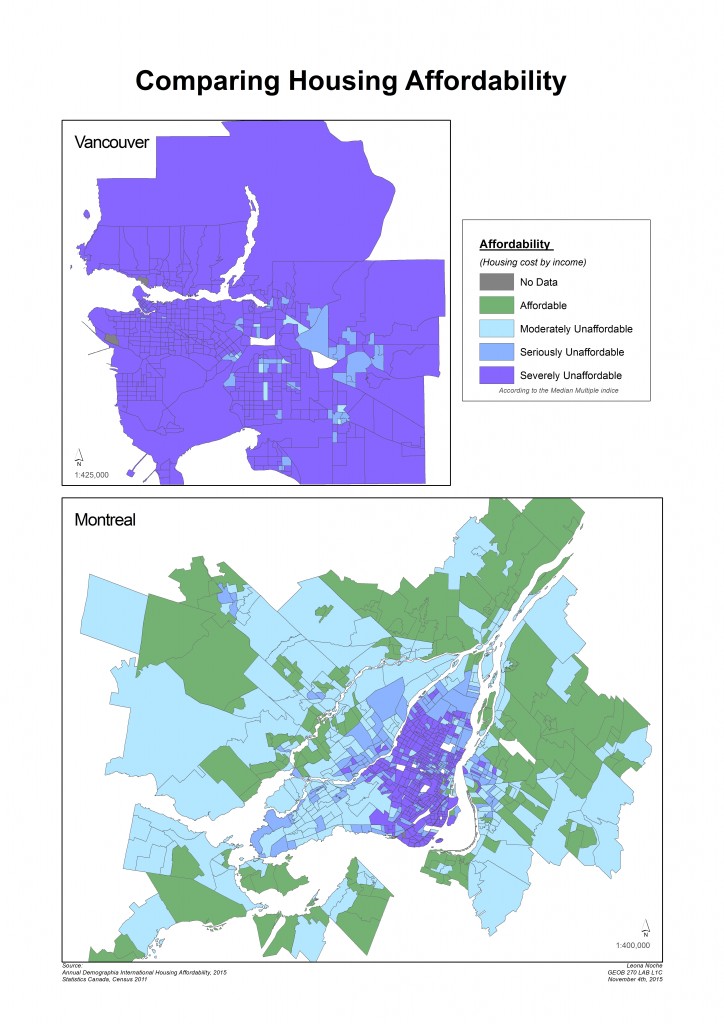Affordability measures the median cost of housing divided by the gross annual median household income. It is called Median Multiple. The cost of housing solely is raw data which does not provide any context or relational value to make critical analysis and to allow comparison between places with diverse living standards.
Demographia International Housing Affordability Survey determines the categories of housing affordability rating:
Rating Median Multiple
Severely Unaffordable: 5.1 & Over
Seriously Unaffordable: 4.1 to 5.0
Moderately Unaffordable: 3.1 to 4.0
Affordable: 3.0 & Under
The goal of Demographia International Housing Affordability Survey is to promote domestic public policy based on the improvement of living standards and on the lowering of poverty levels. They maintain international records of affordability and insures that data are not influenced by many factors to facilitate comparability in different metropolitan cities and countries. In addition, they oversee urban planning policies to encourage reasonably priced housing. Their principals are already an indicator of impartiality within their research that shows credibility. For about 11 years, they are a reliable source of information and hold the largest collection of international housing affordability data. On top of that world renowned organizations and institutions, such as United Nations and Harvard University, utilizes the data provided in the survey.
Overall, affordability is a simple index but it provides a lot of information. Affordability is also good indicator a city’s livability because it considers urban containment, which can be referred to as densification policies(increasing cost and limiting housing availability on the urban fringe), that is detrimental to the environment.
References
11th Annual Demographia International Housing Affordability Survey. Retrieved October 25, 2015 from http://www.demographia.com/dhi.pdf
